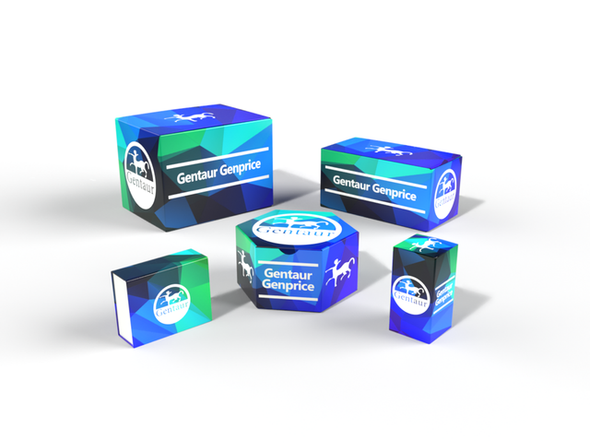26
Urokinase Sepharose Beads | 7927
- SKU:
- 26-7927-GEN
- Availability:
- Usually shipped in 5 working days
Description
Urokinase is a serine protease that specifically cleaves the Arg560-Val561 bond in plasminogen to form plasmin. Urokinase Sepharose beads are designed for efficient cleavage and activation of various proteins containing a urokinase cleavage site, circumventing the need for chromatographic techniques to remove urokinase after completion of the cleavage reaction. ’s Urokinase Sepharose beads are prepared by covalent coupling of human recombinant Urokinase (Cat # 7696) to activated 6% cross-linked Sepharose beads. 250 µl of the slurry is sufficient to cleave >90% of 1 mg of Plasminogen (Cat # 7549) in 50 mM Tris buffer, 0.1 M NaCl, pH 7.4 within 4 h at 37°C. These beads can be regenerated for repeated use. The efficiency of reused beads depends on multiple criteria including previous usage, sample and handling of the beads.
7927 | Urokinase Sepharose Beads DataSheet
Sort Name: Urokinase Sepharose Beads
Label Name: Urokinase Sepharose Beads
Taglines: Beads for efficient and convenient cleavage of plasminogen and other recombinant fusion proteins containing a urokinase-specific cleavage site.
Product Highlights: FORMULATION: Urokinase on 6% cross linked Sepharose beads, provided as 50% slurry in pure glycerol. LIGAND DENSITY: 0.11 mg/ml of the resin. APPLICATIONS: Efficient and convenient cleavage of plasminogen and other recombinant fusion proteins containing a urokinase-specific cleavage site. PROTOCOL: In order to find the optimum cleavage conditions for a target protein, it is recommended to run preliminary cleavage reactions at a small scale. Successful cleavage with urokinase is dependent upon proper folding of the target protein that enables access of the urokinase recognition sequence by the enzyme. Once optimum cleavage conditions are obtained, the reaction can be scaled up to cleave the entire amount of the target protein. The target protein should be purified to homogeneity and dialyzed against 50 mM Tris buffer, 0.1 M NaCl, pH 7.4 before setting up the cleavage reaction. 1) Resuspend the beads by gentle swirling. Do not vortex. 2) Aliquot 250 µl of the suspended slurry and add to 1 mg of the target protein in an Eppendorf tube. We recommend a protein volume of >400 μl/tube to facilitate proper mixing during the reaction. 3) Mix gently by inverting the tube (do not vortex) and shake on a rotary shaker at 37°C. 4) At regular time intervals, spin down the tube to aliquot a test sample and freeze it immediately. At the end of the reaction, analyze the samples by SDS-PAGE. Recovery of the cleaved target protein: 1) After the fusion protein is completely cleaved, spin down the reaction mixture for 2-3 min at 1,500 x g. 2) Remove the supernatant and wash the beads with 0.2 ml of 50 mM Tris buffer, 0.1 M NaCl, pH 7.4. 3) Repeat steps 1 and 2 to maximize the recovery of the target protein and its cleaved fragment. Further chromatography may be necessary to remove the cleaved fragments from the target protein.
Packaging: EA
Additional Information
Storage Temperature: |
-20°C |
Shipping: |
Gel Pack |
Shelf Life: |
12 months |






